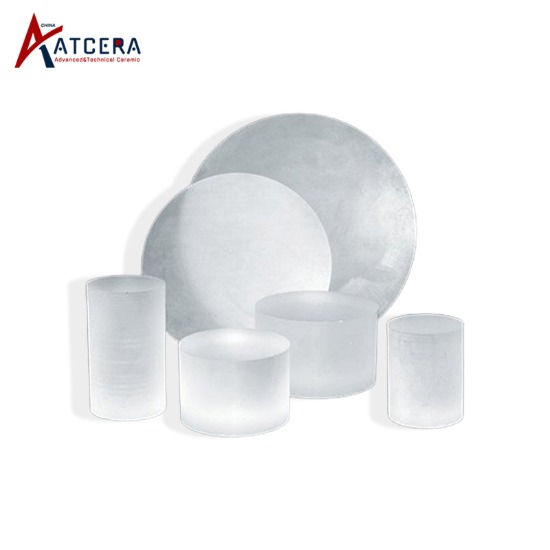Essendo un nuovo materiale inorganico non metallico con prestazioni elevate e molteplici funzioni, la ceramica trasparente mostra un grande potenziale di applicazione in ottica, elettronica, aerospaziale e altri campi grazie alla sua eccellente trasmissione della luce, elevata resistenza, elevata durezza e buone proprietà termiche e stabilità chimica. Tra i tanti metodi per preparare la ceramica trasparente, la sinterizzazione con pressatura a caldo è diventata una delle tecnologie chiave per ottenere materiali ceramici trasparenti ad alte prestazioni grazie alle sue caratteristiche tecnologiche uniche. Lo scopo di questo articolo è discutere il principio di applicazione e i vantaggi tecnologici della tecnologia di sinterizzazione con pressatura a caldo nella preparazione di ceramiche trasparenti e il suo effetto promotore sullo sviluppo futuro della scienza dei materiali.

Il principio di base e il processo di sinterizzazione con pressatura a caldo
Tecnologia di sinterizzazione con pressa a caldo attraverso la polvere o il corpo ceramico di formatura preliminare posto in uno stampo di metallo o grafite ad alto punto di fusione, in un ambiente ad alta temperatura per applicare una certa pressione per favorire lo stretto contatto e la diffusione delle particelle di polvere, in modo da completare la sinterizzazione processo in breve tempo. Questo processo non solo può migliorare la densità della ceramica, ma anche inibire efficacemente la crescita anomala dei grani e ottenere materiali ceramici trasparenti con grani fini e struttura uniforme.
Vantaggi della sinterizzazione diretta di grezzi in ceramica
La tecnologia di sinterizzazione con pressatura a caldo può sinterizzare direttamente il grezzo ceramico senza complicati pretrattamenti, semplificando il processo di produzione e riducendo il consumo di energia e i costi. Allo stesso tempo, poiché la pressione applicata nel processo di sinterizzazione aiuta ad eliminare i pori, migliora la trasmissione della luce e la resistenza meccanica della ceramica, in modo che le ceramiche trasparenti preparate presentino vantaggi significativi nei componenti ottici, nei materiali per finestre e in altre applicazioni.
Innovazione del processo di integrazione di stampaggio e sinterizzazione
Uno dei punti salienti di questa tecnologia è la capacità di combinare il processo di stampaggio con il processo di sinterizzazione, ovvero di completare la sinterizzazione applicando pressione, il che non solo migliora l'efficienza produttiva, ma riduce anche i difetti che possono essere introdotto a causa di molteplici lavorazioni, garantendo le prestazioni complessive e la consistenza del materiale ceramico. Questo processo integrato è particolarmente importante per la preparazione di parti in ceramica trasparenti con forme complesse e offre la possibilità di una produzione di precisione.
In sintesi, la tecnologia di sinterizzazione con pressa a caldo svolge un ruolo cruciale nello sviluppo e nella produzione di materiali ceramici trasparenti con le sue caratteristiche di preparazione efficienti e di alta qualità. Non solo ottimizza il tradizionale processo di sinterizzazione, promuove il miglioramento delle prestazioni della ceramica trasparente e la riduzione dei costi, ma amplia anche il campo di applicazione della ceramica trasparente e pone solide basi. Con il continuo approfondimento della ricerca sulla scienza dei materiali e il continuo progresso della tecnologia, si prevede che la tecnologia di sinterizzazione con pressa a caldo dimostri il suo valore unico nella preparazione di materiali ceramici più performanti e multifunzionali e inietti nuova vitalità nello sviluppo di nuovi materiali industria. In futuro, l'esplorazione di nuovi processi di sinterizzazione con pressa a caldo più rispettosi dell'ambiente e a risparmio energetico, nonché lo sviluppo di nuovi materiali ceramici trasparenti con funzioni specifiche, saranno al centro della ricerca in questo campo.

























